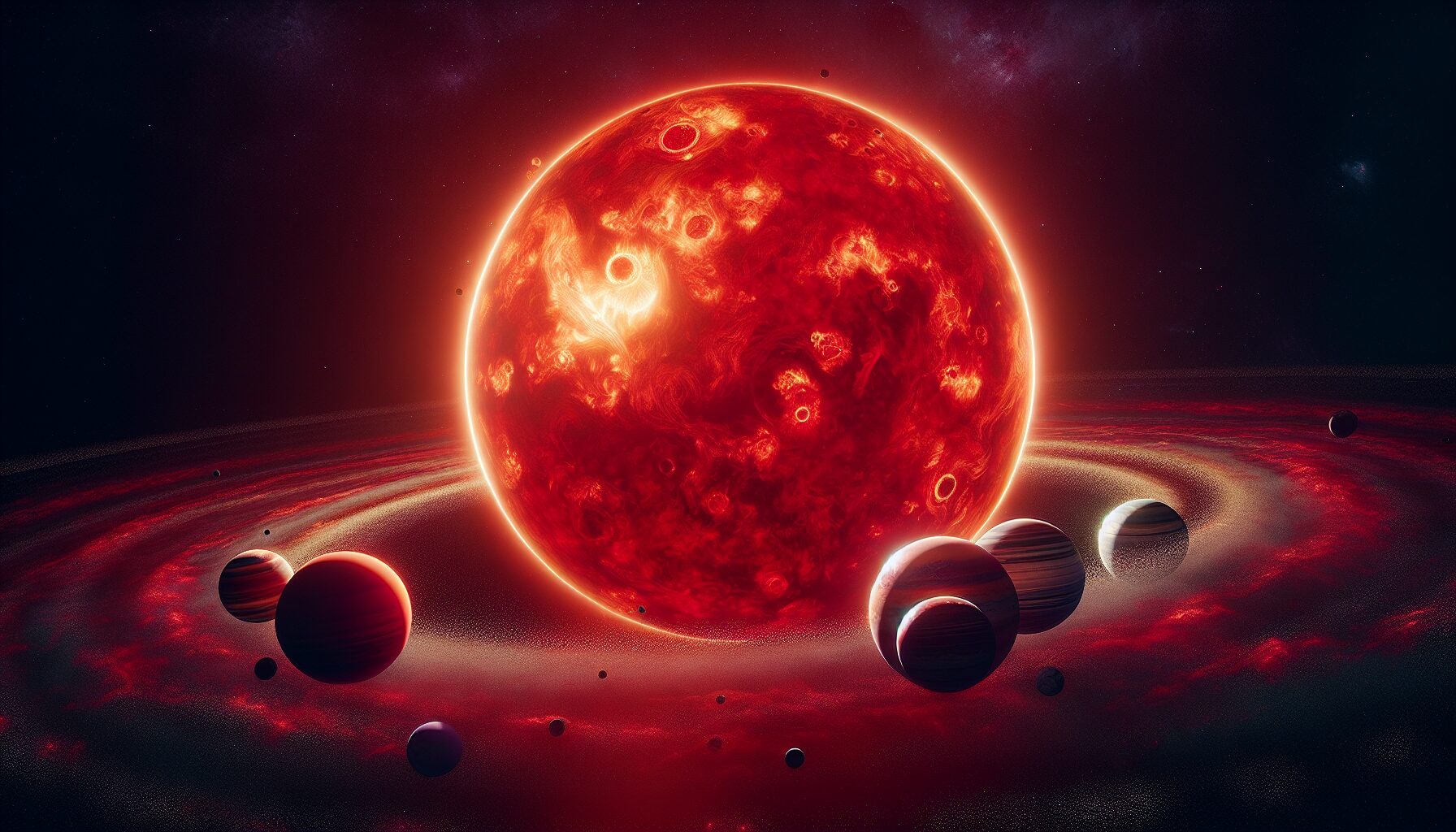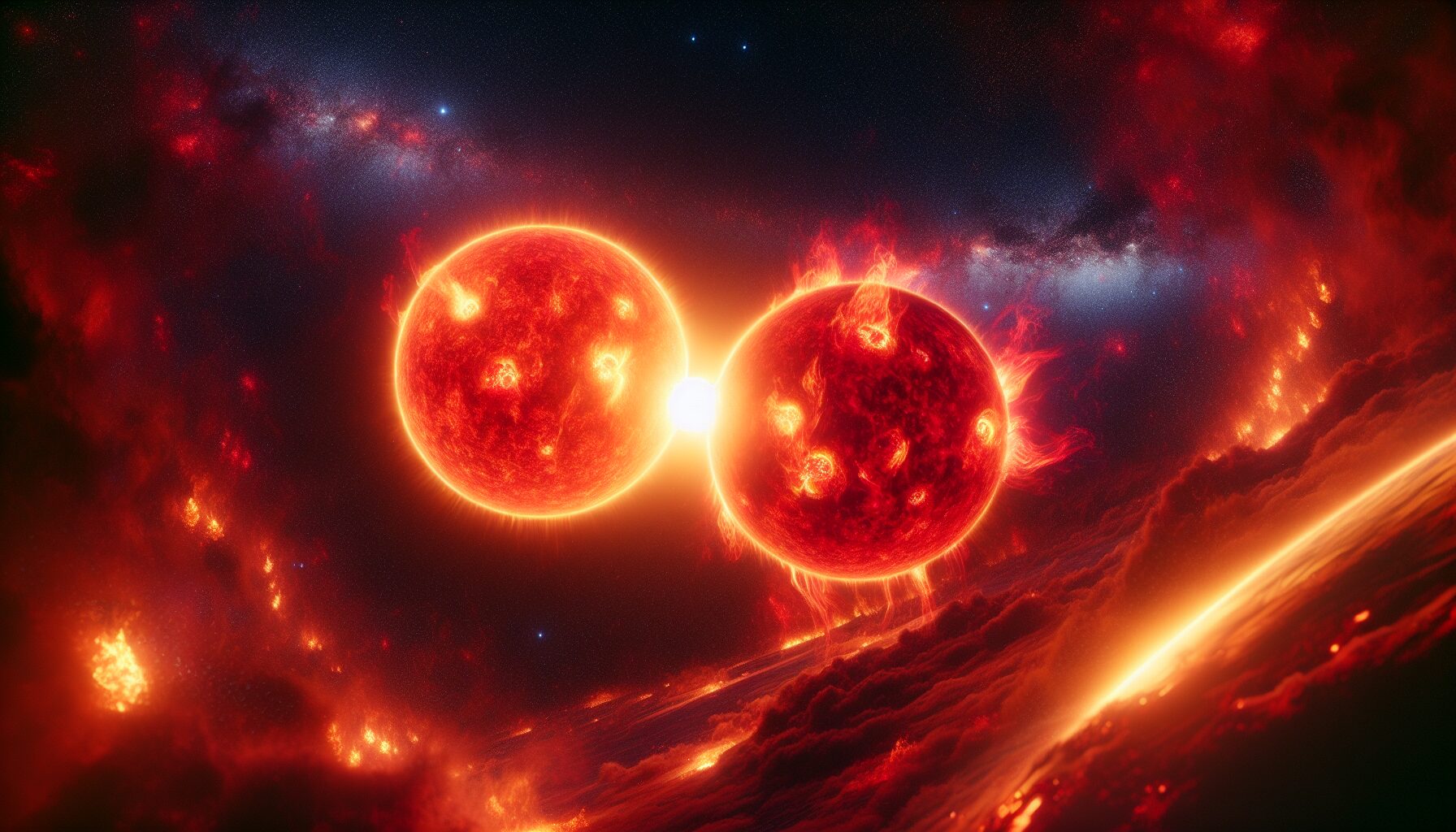Solar System’s Future: A Graveyard Around a Red Sun
The sun, an unwavering beacon of life and warmth, has guided the solar system through the empty vastness of space for billions of years. However, like all stars, our sun is not eternal. Within the cosmic timelines, it is but a fleeting moment. By examining its future, we can glimpse at the fate of the solar system—destined to become a graveyard orbiting a dying red sun.
The Lifecycle of the Sun
Currently, the sun is in its main-sequence stage, fusing hydrogen into helium in its core. This balance of forces produces the sunlight and energy that support life on Earth. However, in approximately 5 billion years, this delicate equilibrium will tilt. The sun will exhaust its hydrogen fuel, and its core will begin to collapse under gravity’s relentless pull.
“The Sun will run out of hydrogen in its core and begin the process of helium fusion. This marks the end of the Sun’s main-sequence life,” explains Dr. Jennifer Hudgins, a solar astrophysicist at NASA.
The Red Giant Phase
As the core contracts, the sun’s outer layers will expand tremendously, swallowing the inner planets from Mercury to possibly Earth itself, transforming into a red giant. Its outer envelope will inflate and redden, painting a surreal, apocalyptic tint across the solar landscape.
During this transformation, the sun will shed vast amounts of its mass. The loss will drastically weaken its gravitational hold on the solar system. As a result, distant planets like Mars and even gas giants such as Jupiter could drift further away.
- Mercury and Venus: Almost certainly engulfed by the sun.
- Earth: May survive initial expansion but will face unbearably high temperatures and eventual absorption.
- Mars and Beyond: Likely to orbit a greater distance due to diminished solar gravity.
A White Dwarf Remains
The red giant phase will not last forever. After approximately 1 billion years of expansion, the sun will expel its outer layers, forming a beautiful but ghostly planetary nebula. The core that remains will settle into a white dwarf—a fading, cooling ember of its former self.
White dwarfs are approximately the size of Earth yet contain around half the sun’s original mass. This remnant will no longer be capable of sustaining nuclear fusion, but instead will glow faintly as it radiates the residual heat into the cosmos over billions of years.
Dr. Timothy Banks, a stellar evolution specialist at the European Space Agency, highlights, “It’s a quiet end for such a mighty star, marking it as a marker of time in a changing universe.”
A Celestial Graveyard
The solar system’s intricate dance of planets and debris will by that time have transformed dramatically. A now-expanded Mars may experience new, albeit brief, intrigues in terms of habitability due to increased warmth. The outer solar system will persist in icy seclusion around the dim ember of the sun.
The death of our sun will not only redefine the solar system’s architecture but also hold philosophical implications. As remnants of human civilization drift in space, left behind in what might become barren and frozen worlds, they will stand as silent testimony to humanity’s indomitable curiosity and desire to explore.
- Asteroids and Comets: Their orbits will remain disturbed by the sun’s loss of mass.
- Kupier Belt and Oort Cloud: These ancient reservoirs of icy bodies will similarly be scattered.
Legacy of the Sun
In reflecting on this shifting stellar fate, we not only see the vastness of time and nature’s cyclical beauty but are also reminded of life’s persistent fragility. Our quest for knowledge about other solar systems, as driven by missions like NASA’s Kepler and Transiting Exoplanet Survey Satellite (TESS), continues to enlighten these very processes.
The sun’s eventual transformation into a celestial repository encircles the grand narrative that all stars will tell: life, death, and rebirth in a cosmic dance. We look to that distant future, not in fear but in wonder. Humanity, with its unstoppable drive, will likely already have ventured far beyond, into the galaxy, chasing the eternal light of other stars.
As astronomers dream about the myriad possibilities, it remains clear that the story of the sun is far from over even as its light dims, leaving behind a lasting legacy in the universe.

